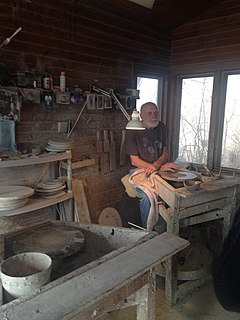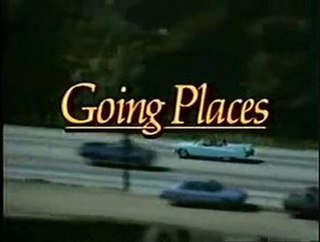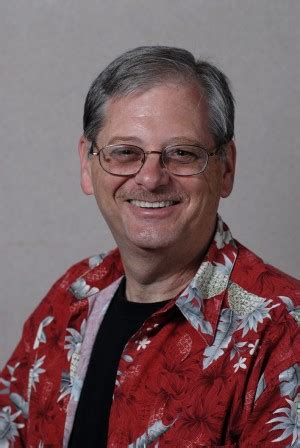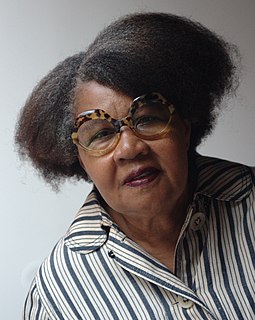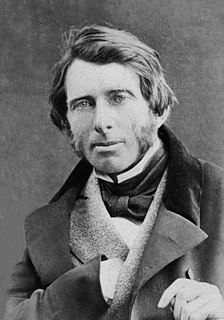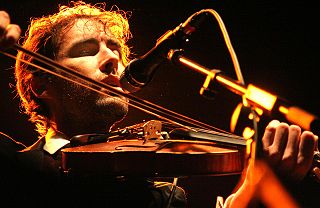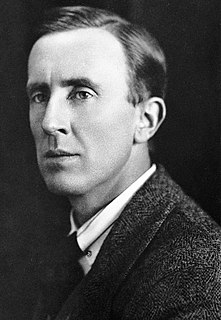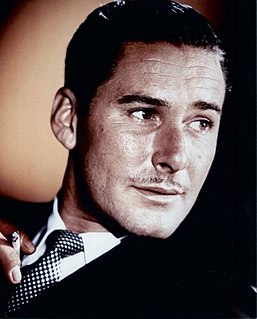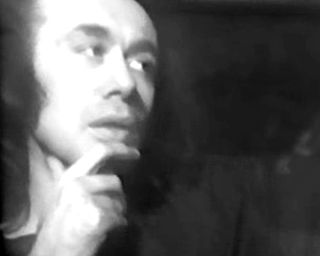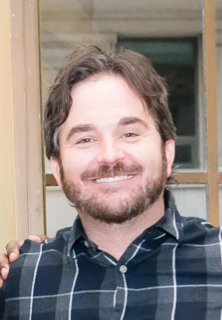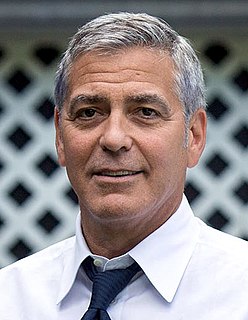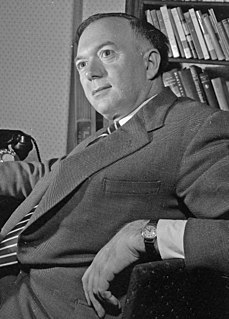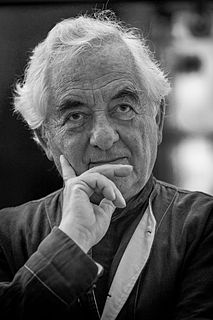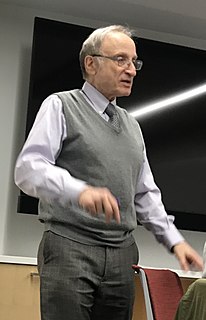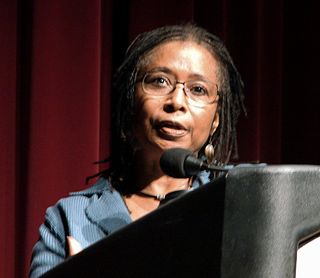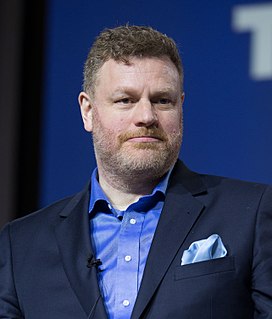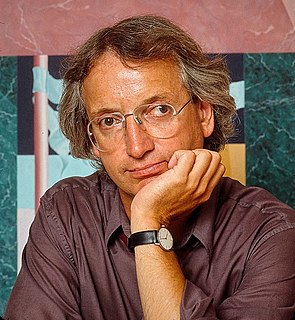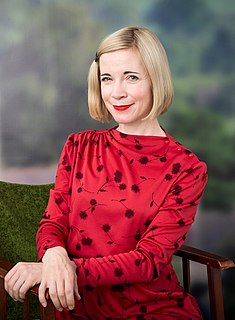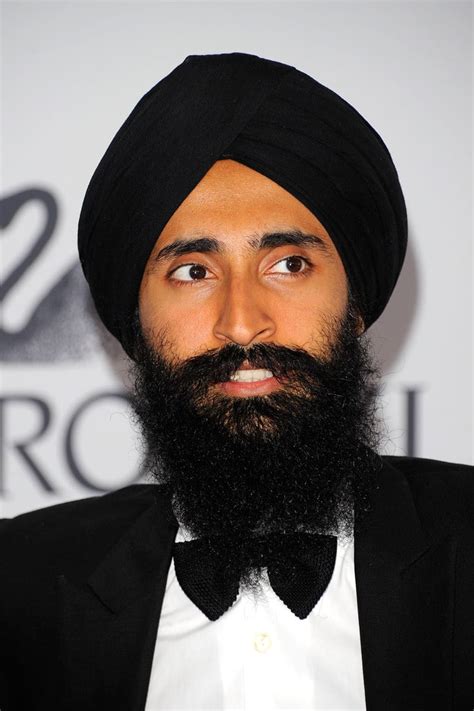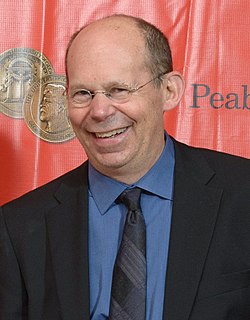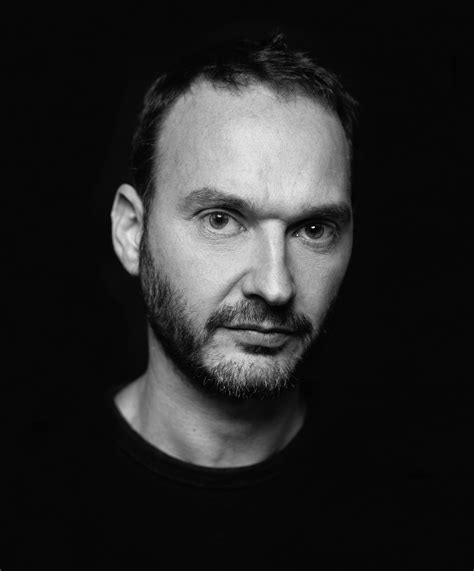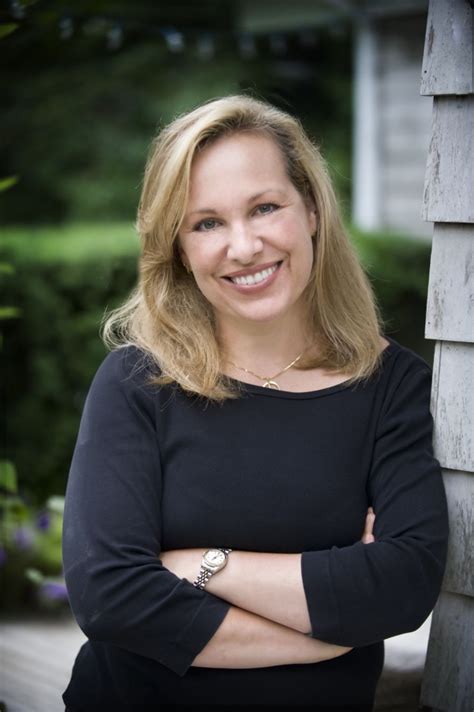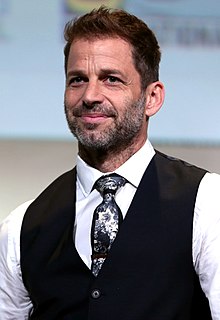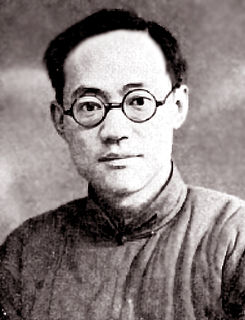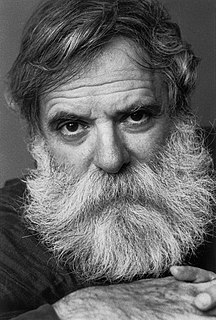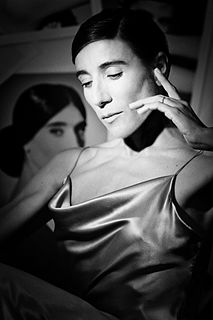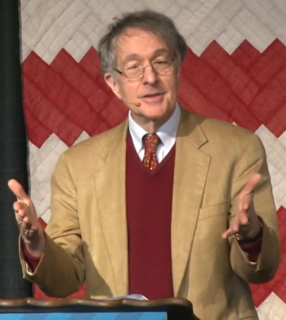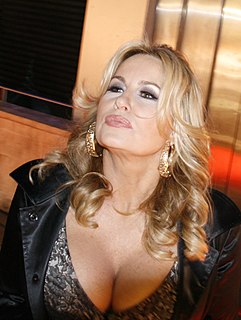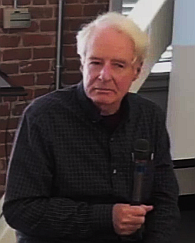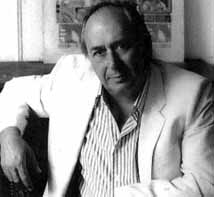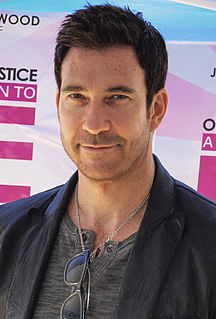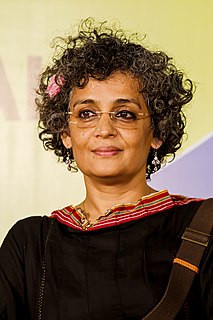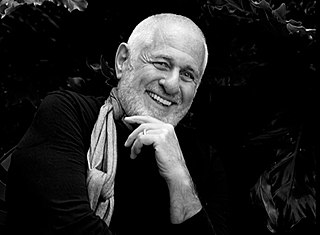Top 814 Museum Quotes & Sayings - Page 13
Explore popular Museum quotes.
Last updated on November 8, 2024.
Remember, this is back in the '40s, and the idea of a museum being a place where interested people could come in direct contact with works hadn't arrived on the scene yet. That, I think, I first ran into at the Freer Gallery in Washington, D.C., where a man named Marty [Martin] Amt decided that he really felt his job - part of his job, as an assistant [to the] director was to make the collection available to interested people.
My high school guidance counselor, Mrs. Inverholl, once had me take an aptitude test to figure out my future. The number one job recommendation for my set of skills was an air traffic accident investigator, of which there are fewer than fifty in the world. The number two job was a museum curator for Chinese-American studies. The number three job was a circus clown.
Last week we went to the museum. A whole whale is hanging from the ceiling. Bigger than big! OK, have you seen a Volkswagon car that's like a bug? Um huh, you know what I'm talking about. That's how big the heart of a blue whale is. I know it's not possible, but if that heart was in me, could I love more?...I would like to.
There was nothing the matter with me that was not also the matter with everyone else. I was not as interesting as I thought I was. My major problem, inadequate or inappropriate love from my parents, was as common as dirt. And one rainy day, all the boring poignancy of these realizations detonated in me like an atom bomb, burning the dead shadow of each former torment or preoccupation onto solid rock. Those silhouettes, that record would remain: the museum where I used to be.
I had hardly expected so dolichocephalic a skull or such well-marked supra-orbital development. Would you have any objection to my running my finger along your parietal fissure? A cast of your skull, sir, until the original is available, would be an ornament to any anthropological museum. It is not my intention to be fulsome, but I confess that I covet your skull.
Scientific data are not taken for museum purposes; they are taken as a basis for doing something. If nothing is to be done with the data, then there is no use in collecting any. The ultimate purpose of taking data is to provide a basis for action or a recommendation for action. The step intermediate between the collection of data and the action is prediction.
The Metropolitan Museum of Art some time ago held a display of contemporary art at which $52,000 was awarded to American sculptors, painters, and artists in allied fields. The award for the best painting went to the canvas of an Illinois artist. It was described as "a macabre, detailed work showing a closed door bearing a funeral wreath." Equally striking was the work's title: "That which I should have done, I did not do."
There are hundreds of Frank Lloyd Wright buildings around the United States and in other countries, too. Wright lived into his 90s, and one of his most famous buildings, the Guggenheim Museum in New York, was completed just before his death. Wright buildings look like Wright buildings - that is their paradox.
I wanted to be a visual artist, but I realized I was more affected by what I read than by what I saw. I would go to a show at a museum and look at a painting and say, 'Oh I wish I owned that,' and that would be the end of my relationship with a painting. With a short story I would read or with an author I would discover I could be haunted. It would affect my mood and affect the way that I saw the world. I thought, wow, it would be amazing to be able to do that.
In looking at these pots at the Field Museum, Alix [MacKenzie] and I both came to a conclusion individually but also collectively that the pots that really interested us were the pots that people had used in their everyday life, and we began to think - I mean, whether it was ancient Greece or Africa or Europe or wherever, the pots that people had used in their homes were the ones that excited us.
I was brought up to understand Darwin's theory of evolution. I spent hours and hours in the Natural History Museum in London looking at the descriptions of how different kinds of animals had evolved, looking at the sequence of fossil bones looking gradually more and more and more and more like the modern fossil.
You must get into the habit of looking intensely at words, and assuring yourself of their meaning, syllable by syllable-nay, letter by letter... you might read all the books in the British Museum (if you could live long enough) and remain an utterly "illiterate," undeducated person; but if you read ten pages of a good book, letter by letter, - that is to say, with real accuracy- you are for evermore in some measure an educated person.
In New York, I'm playing in a church, solo, doing instrumental stuff. There's talk of doing more, like, installation-type things with some of the specimen horns I've played through. Just filling a room in a museum with these horn-speaker sculptures and then making loops that run all day, and you walk around the room and sort of mix the sound by where you stand. That's all way in the future, but that kind of stuff is a different way of thinking about performing.
So, though there was still some store of weapons in the Shire, these were used mostly as trophies, hanging above hearths or on walls, or gathered into the museum at Michel Delving. The Mathom-house it was called; for anything that Hobbits had no immediate use for, but were unwilling to throw away, they called a mathom. Their dwellings were apt to become rather crowded with mathoms, and many of the presents that passed from hand to hand were of that sort.
[In the Field Museum of Natural History] we could see very simple, primitive, hand-built pottery from Babylonia and ancient Egypt and so forth, Greece. We could see the most sophisticated things that came out of the Orient - Japan, Korea, and China - some few pieces of European porcelain, majolica [tin glazed earthenware], and that sort of thing. But they had a marvelous collection.
If the 'Principle of Relativity' in an extreme sense establishes itself, it seems as if even Time would become discontinuous and be supplied in atoms, as money is doled out in pence or centimes instead of continuously;-in which case our customary existence will turn out to be no more really continuous than the events on a kinematograph screen;-while that great agent of continuity, the Ether of Space, will be relegated to the museum of historical curiosities.
I enter a whorehouse with the same interest as I do the British museum or the Metropolitan - in the same spirit of curiosity. Here are the works of man, here is an art of man, here is the eternal pursuit of gold and pleasure. I couldn't be more sincere. This doesn't mean that if I go to La Scala in Milan to hear Carmen I want to get up on the stage and participate. I do not. Neither do I always participate in a fine representative national whorehouse - but I must see it as a spectacle, an offering, a symptom of a nation.
What I never wanted in art - and why I probably didn't belong in art - was that I never wanted viewers. I think the basic condition of art is the viewer: The viewer is here, the art is there. So the viewer is in a position of desire and frustration. There were those Do Not Touch signs in a museum that are saying that the art is more expensive than the people. But I wanted users and a habitat. I don't know if I would have used those words then, but I wanted inhabitants, participants. I wanted an interaction.
With Rodham, for instance, it has to work on an emotional level. It has to work on a character level. If it's only "Look, it has famous people," then it's a wax museum come to life and that's really boring. It's sort of like what they say about science fiction and horror where the really good ones, if you remove that element of it, it still has to work. That's the reason The Shining works or Rosemary's Baby or Blade Runner.
It is a question in that case of breaking up one piece of art, and whether that piece of art can be as best as possible put back together. So it's an argument to say, maybe that's one of those instances, like the bust of Nefertiti, I think that should be given back [Egyptian piece currently in Neues Museum in Berlin]. It's one of those pieces you look at and think that would probably be the right thing to do.
Japan suffered terribly from the atomic bomb but never adopted a pose of moral superiority, implying: 'We would never have done it!' The Japanese know perfectly well they would have used it had they had it. They accept the idea that war is war; they give no quarter and accept none. Total war, they recognize, knows no Queensberry Rules. If you develop a devastating new weapon during a total war, you use it; you do not put it into the War Museum.
Colonialism is a terrible bane for a people upon whom it is imposed, but a blessing for a language. English's drive to exploit the new and the alien, its zeal in robbing words from other languages, its incapacity to feel qualms over the matter, its museum-size overabundance of vocabulary, it shoulder-shrug approach to spelling, its don't-worry-be-happy concern for grammar-the result was a language whose colour and wealth Henry loved.
My views have changed as much as the world, and more precisely, the world of art. You have to remember that all my criticisms of the institution were done directly from the world I was in and my analysis of it. Many things that I said about the omnipotence of the museums, for example, are today almost obsolete. In fact, the museum and the institution drastically lost their power by the pure fact that they disseminated by thousands around the world.
My first audition I ended up getting the film was Margaret's Museum with Helena Bonham-Carter. And I went off for about two months on my own even to Scotland and hit Brittan and Nova Scotia and was surrounded by very creative people, nomadic people. And I just really loved the lifestyle and the zest for life and they kind of confused me ever since. So I've been chasing that dragon.
Unless created as freestanding works, quotations resemble "found" art. They are analogous, say, to a piece of driftwood identified as formally interesting enough to be displayed in an art museum or to a weapon moved from an anthropological to an artistic display.... The presenter of found art, whether material or verbal, has become a sort of artist. He has not made the object, but he has made it as art.
I built a cannon out of ice, and wrapped myself in the funeral carpet which my husbands and wives had woven for me out of their own hair, and one of my wives was my gunner. I came back here, after many adventures, and once, when I'd been drinking, donated the funeral carpet to the national museum. When I was sober again, I asked for it back, but they claimed not to know what I was talking about.
The desire to please is maligned, unfairly. There are many sides to it. First of all, pictures have to arouse interest before people will even look at them, and then they have to show something that holds that interst - and naturally they have to be presentable, just as a song has to be sung well, otherwise people run away. One mustn't underrate this quality, and I have always been delighted when my pieces have also appealed to the museum guards, the laymen.
Sometimes we forget that if we do not encourage new work now, we will lose all touch with the work of the past we claim to love. If art is not living in a continuous present, it is living in a museum, only those working now can complete the circuit between the past, present and future energies we call art.
I personally have never trusted museums. ... It is because museums, broadly speaking, live off of the art and artifacts of others, often art and artifacts that have been obtained by dubious means. But they also manipulate whatever it is they present to the public; hence, until Judy Chicago, in the 1970s ... few women artists were hung in any major museum. Indian artists? Artifacts only, please. Black artists? Something musical, maybe? And so forth.
I've got funny things. David Duchovny had to have a cast made of his face to do an old person's make-up, and I've got that cast of his face in my house. I've got something from the pilot, the original implant that was in Billy Miles' head. I've got a sign from 'The Erlenmeyer Flask.' But my house isn't a museum to 'The X-Files!'
For all the casual slurs about 'cultural imperialism', British imperialists were more interested in other cultures than anybody before or since, and, if they hadn't dug it up and taken care of it, we'd know hardly anything about the ancient world. What's important about a nation's past is not what it keeps walled up in the museum but what it keeps outside, living and breathing as every citizen's inheritance.
Alberto Alessi had asked a dozen architects to design a sterling silver tea service - with a teapot, a coffee pot, sugar, creamer, a spoon, and a tray. Our brief was that it didn't matter if it didn't work and cost wasn't the issue. It was a promotional project, not a commercial enterprise, and was going to be showcased in museums. And the coffee and tea piazza, as mine was called, received a great response. It was wonderful to walk into the Whitney museum and see all these objects on the first floor.
Design and the urgency to preserve it - not as a museum relic, as a living experience. And for me, something that lives alongside mass-produced goods. I'm not saying get away from it. My battle is there is a marketplace for what people wear and what they eat and care about how things are made and not just that they were made, and that's the core focus. I know where things come from, I know their families. I do that throughout my life - I know who makes my suits, and I know where my eggs come from. Everyone and everything is accounted for and has accountability.
I think that once you're able to sort of get in line with who and how you relate to the world, you'll become closer to this index that I'm referring to. Because what you want is this card that relates to that book. What you want is this human that relates to this world, rather than having this art school society scattering that point of view somewhere in between. It becomes diffused. And that level of clarity, I think, was gained at the Studio Museum in Harlem.
Freedom is like holding a small bird. If you squeeze it too hard, you will kill it. But if you don't hold it firmly enough, it will fly away. Indeed, freedom can be both fragile and elusive, and so-as the McCormick Tribune Freedom Museum so powerfully reminds us-it requires our eternal vigilance, our willingness, our ability, our conviction to stand up for that which we think is right.
Your regional newspaper, and I like to use this example, in your local museum buys a Picasso, that's news especially if they've spent $10 million for it. But if you don't have a credit on your staff then you don't have anybody who's confident to say whether or not it was a good Picasso, might even be aware of the fact that there are bad Picassos. Arts journalists who don't have the experience of criticism, the skill of criticism, don't think in terms of critical evaluation are not going to be as good a journalist as they might be.
Over the years, she [my mother] always encouraged me in the arts. She actually worked at an art museum when we were kids. I took classes there. She was the one that, when we'd go to the store and I would have a pack of eight pastels, she'd say, "No, get the 24-pack." She was always encouraging me to get the best materials, which was really awesome.
I like the idea of seeing a film that has the artist's hand in there,a film where you can see his strokes, you can see his working patterns. It's like going to a museum and seeing a Renoir drawing. You want to see their work and you want to see how they put it together. For me to see that in animation is really fresh, it's really exciting, it's really original.
It might be helping to explore a story visually by going to see a museum exhibit that's relevant to something that somebody's reading, or going to see a show or listening to a piece of music or cooking a meal that's in one of the stories, something practical, something kinesthetic that draws the reader in and helps them to experience the story for themselves. Those are all ways I think we can kind of come in the back door and help kids find the joy, as opposed to the chore or responsibility, of reading.
I've wanted you from the moment I first saw you in the museum. Before that. I wanted every part of you from the first time I felt you, your presence. I want you in the sky, and against the earth. I want to kiss you again, I want to touch you, I want to feel you in my arms and I want to hear you gasping my name when I'm inside you. I want all that, and I want it badly. Every time I look at you, I want it. So you're going to have to become used to that, Rue. It won't change." (Christoff to Rue)
There was this interesting quote: try and live your life without fear and desire. It's this concept that's like when you look at a painting in a museum and you are held in aesthetic arrest. So the I, the ego, is stripped, is gone. The observer and thing become one. That's where fear and desire come in because you don't want to own it, possess it, desire it, and it's not moving you to fear. It's like you're in this harmonious state with the object.
Nobody would say the cowshed was heaven and nobody would say the inhuman torture of so many victims be called a revolution of the proletariat. ... A museum should be established to remind China of the follies and disasters that had fallen from 1966 to 1976. We cannot forget what had happened and history should not repeat itself.
I still remember the time when I visited the wax museum in London. While there were statues of many sports personalities, including that of Sachin Tendulkar, I didn't see a wax figure of any hockey player. I was a little disappointed at that time, and I hoped that one day, at least in India, someone would make a wax statue of a hockey player.
Your rainbow panorama enters into a dialogue with the existing architecture and reinforces what is assured beforehand, that is to say the view of the city. I have created a space which virtually erases the boundaries between inside and outside – where people become a little uncertain as to whether they have stepped into a work or into a part of the museum. This uncertainty is important to me, as it encourages people to think and sense beyond the limits within which they are accustomed to moving.
In 1966, while working on a feature about a Picasso exhibition at the Tel Aviv Museum of Art, I recorded the pre-opening preparations and observed a moment: One of the cleaners stopped, puzzled, in front of the Picassos. I think that this is an image that can be universally understood, but with a grain of salt. I never chose this image in edits before because it seemed to me that it felt posed-the composition was a little too perfect. But, believe me, it was a lucky moment.
I am always looking for inspiration. I always live in big cities where I can go every day to a museum, see a lecture, meet people that are artists, go to the cinema. For me, it's like food. It is necessary for my personal growth as a person to grow as an artist, I go basically every week to three or four things. But it's real life that inspires me - when I meet somebody, when I see something.
Gas Lights - Without Oil, Tallow, Wicks or Smoke. It is not necessary to invite attention to the gas lights by which my salon of paintings is now illuminated; those who have seen the ring beset with gems of light are sufficiently disposed to spread their reputation; the purpose of this notice is merely to say that the Museum will be illuminated every evening until the public curiosity be gratified.
When speaking to parents, I encourage them to take their child(ren) to a children's museum and watch carefully what the child does, how she/she does it, what he/she returns to, where there is definite growth. Teachers could do the same or could set up 'play areas' which provide 'nutrition' for different intelligences... and watch carefully what happens and what does not happen with each child.
Peace is not just the absence of war and conflict; it goes well beyond that. Peace must be fostered within the individual, within the family and within society. Simply transferring the world's nuclear weapons to a museum will not in itself bring about world peace. The nuclear weapons of the mind must first be eliminated.
The thing I'm obsessed with is really great bad paintings. I have a storage locker full of them and I want to give them their own museum. You don't even know who these artists are - you can buy them at garage sales, antique stores and places like that. They're brilliant because they were done with the intention of being great, but the artist sort of made a wrong turn. Some of them are hilarious and I can't get enough of them.
Things have gotten openly more extreme in the last few years. I was lecturing in Hungary, whose prime minister, Victor Orban, is an example of this trend. All over Budapest, statues have been replaced, museum exhibits have been redone, to turn ethnic Hungarians, not Jews, into the prime victims of the Germans during World War II. Five years ago, who would have thought this possible?
Trying to exhaust himself, Vaughan devised an endless almanac of terrifying wounds and insane collisions: The lungs of elderly men punctured by door-handles; the chests of young women impaled on steering-columns; the cheek of handsome youths torn on the chromium latches of quarter-lights. To Vaughan, these wounds formed the key to a new sexuality, born from a perverse technology. The images of these wounds hung in the gallery of his mind, like exhibits in the museum of a slaughterhouse.
I believe that Ryan Murphy is a genius. His instincts remind me of Andy Warhol. I recently went to the Warhol museum in Pittsburgh, and you can see a lot of echoes of Andy in Ryan's work. Like Andy, Ryan's finger is so on the pulse of culture that he's ahead of culture. Their aesthetic and their vision of the world are very similar.
Eventually I gave up teaching at the St. Paul Gallery because of disagreements with the philosophy of that museum, and I got a job at the University of Minnesota, which was very fortunate because it was a part-time job and that gave us a great deal of time in our studio to work together and to make the pots we wanted to make.
Just like in the art museum, and notions of beauty and pleasure, if the hero is always a white guy with a squared jaw or pretty woman with big breasts, then kids start thinking that's how it's supposed to be. Part of the problem was that black comic book artists were making super heroes with the same pattern as the white super heroes. When you read a lot of those comics, the black super heroes don't seem to have anything to do.
In Iraq, until before the war, the women were scientists, museum directors, doctors. I'm not valourising Saddam Hussein or the Soviet occupation of Afghanistan, which was brutal and killed hundreds of thousands of people - it was the Soviet Union's Vietnam. I'm just saying that now, in these new wars, whole countries have slipped into mayhem - the women have just been pushed back into their burqas - and not by choice.
My opening line to my students, and a recurring theme in my classes, was that the big design problem isn't designing a house for your parents or yourself, a museum, or a toaster, or a book, or whatever. The big design problem is designing your life. It's by the design of your life that you create the backboard off which you bounce all your thoughts and ideas and creativity. You have to decide what it is that you want to do each day.
